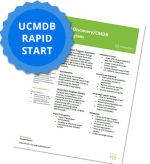Deliver Testing Results with Incentive Packages
By: Matt Angerer
According to TechTarget, beta testing is the second phase of software testing. During beta testing a sampling of the intended audience tries out the software product. The preceding phase of testing, referred to as Alpha Testing, usually includes unit, string, and system assessments. The beta test is often considered a “pre-release” of the developed software. It’s a great opportunity to identify a subset of end users who will provide you with their unfiltered opinion of design changes and validate whether any critical defects are present.
This month, we want to explore why rewarding your beta testers with incentives can delivers results. Opinions vary widely on what motivates an individual to go “above and beyond” for a testing organization. From their perspective, QA Testers don’t really work for their department, they work for their QA Lead or Test Manager. That’s a sad situation when the QA Analyst works in a decentralized environment and barely hears from his manager. Surely, there must be other techniques to ensure your team remains motivated in the long term. And that’s where incentive packages come into play.
Let’s review some of the basics:
- An incentive is a reward or an “atta boy” for participating in your beta testing program. For the athletes out there, we remember the “kudos” handed out after Monday’s football practice highlighting the achievements we had in the preceding Friday night football game. Quarterback Sack = 4 kudos, Tackle for a loss = 3 kudos, Forced fumble = 2 kudos, and so on. I would personally line these kudos up on the back of helmet, much like the rest of my football teammates did. Our coaches understood the psychology of humans (especially high school kids) and used it to their advantage. It’s not to say that we trained day in and day out for just the “kudo” recognition, but without it – things just wouldn’t have been the same.
- You only want to give kudos or awards to the Beta Testers that earn them – otherwise, they become meaningless. This isn’t Peewee T-Ball where everyone gets a trophy for showing up to the game. So how are these rewards earned? By setting clear expectations at the onset of a testing cycle. Just like my football coaches set clear expectations on what it took to get 4 kudos (e.g., Quarterback Sack), you need to clearly outline what you expect out of your testers. Perhaps the identification of 2 critical defects awards the tester X, or 50 hours of manual testing coverage awards the tester with Y. Be creative and come up with a formula that works for the software you are beta testing. The most important aspect is that you set clear expectations upfront.
It’s also important to keep in mind that your beta testers may also appreciate mementos more than cash incentives. Relating back on my high school football analogy, of course we never received a dime from the high school for the games we won or the crowds we drew to the stadium. It wasn’t about the money; it was about the mementos we took with us along the way. Maybe it was the jersey that coach let us keep or the football helmet with kudos lining the back. Even a “Beta Test Warrior” t-shirt can mean a great deal to a team member. By continually reinforcing how your beta tester’s contributions shape the overall vision of your products, you’ll keep them much more engaged in the process.
Combining small incentive packages with subtle support like regularly responding to their feedback and frequently expressing thanks will go a long way with testers. Most of the beta testers who decide to join the ranks of your exclusive beta are probably raving fans of your product anyhow! Just be wary of competitors trying to sneak into your program to gain a competitive advantage with their next software release (You can often sniff these people out rather quickly).
No matter what your testing strategy may be, know that ResultsPositive is here to help. We provide the latest testing software and services to ensure you deliver a cohesive and competent product to your end users. Find out more about our application testing solutions, and contact us today!
Subscribe for the latest RP Blog Updates:










